Submachine gun MP 40 / I (Germany)
In the initial configuration, the MP 38 / 40 submachine guns had a detachable box magazine on the 32 of the Parabellum 9x19 cartridge. The magazine was placed in a vertical receiving shaft under the barrel and fed ammunition with an internal spring. Such means of ammunition remained in all major modifications of weapons and did not change their design. However, at a certain point, the need for their development arose.
By attacking the Soviet Union, Germany faced a number of very serious challenges. One of them was the PPSH-41 submachine gun, used with a drum magazine on an 71 cartridge. Such a store gave the Red Army a noticeable advantage in firepower, and therefore could not but interest the enemy. Not later than the end of 1941, a proposal appeared to create improved means of ammunition for serial German submachine guns.
There is reason to believe that the German designers tried to develop an entirely new high-capacity store that is compatible with the receiver of the MP 38 / 40 submachine guns, but there is no detailed information on this. At the same time, it is known that in 1942, an alternative proposal appeared. It implied the preservation of the existing box stores, but provided for a certain revision of the weapon. According to the results of such a design change, the submachine gun could be simultaneously equipped with two standard stores.
A similar project received the working designation MP 40 / I, indicating the origin of the new sample, as well as emphasizing the fact that it was only a modification of the existing design. Also, a submachine gun for two stores in some sources is designated as MP 40 / II, but there is reason to believe this name is the result of any error.
The main task of the project was proposed to be solved with the help of appropriate modifications to the design of the weapon itself, which, however, should not have complicated it. For this reason, it was proposed to replace only one part of a submachine gun that interacts directly with stores. In addition, a new device was introduced into the design of the weapon, which was necessary to keep the stores in working position. All other components and assemblies remained the same.
Despite reworking the ammunition system, the MP 40 / I submachine gun retained its existing layout. Automatics on the basis of the free shutter, coupled with the trigger mechanism without the possibility of a single fire, also did not work out. In its place remained a folding metal butt. Sights did not need any refinement.
MP 38 / 40 basic version was completed with a simple form store receiver. This part, made of sheet steel, had a large upper cylinder for connecting with the receiver and the barrel, and was also equipped with a lower rectangular receiving shaft of the store. The latter was already noticeably cylindrical unit. In the right upper part of the large tubular part there was a window for ejection of spent cartridges. In accordance with the basic ideas of the MP 40 / I project, the store’s existing receiver should have been abandoned in favor of a different design that had different sizes, shapes and composition.
The new receiver retained the rounded top required for connection to the receiver and the barrel. Also in its place remained a window for ejection. The internal volume had the same configuration. The lower part of the receiver was radically reworked. Now she had a pair of large side elements. The device in the form of an inverted “U” was placed directly under the cylindrical part of the receiver, and its side elements protruded in a noticeable way beyond its limits. The width of the updated receiver was about three times the transverse dimension of a standard magazine.
The front and rear edges of the new receiver were bent inward and formed guides to hold the new part. Above such a guide, on the front wall of the receiver, there were a couple of small holes, next to which were short protrusions. The receiver was proposed to be produced by stamping, and therefore the holes and protrusions were the result of the same technological operation.
Directly in the receiver, mounted on the receiver, it was proposed to place the movable shaft stores. It had a fairly simple design and was a rectangular tube of vertical orientation, which had a sufficient cross-section. A curved vertical partition welded in the central part of such a tube. To facilitate the design, the side walls and the central partition should have large circular openings. The top edge of the mine had protrusions to interact with the guides of the receiver.
Outside, on the front wall of the shaft, it was proposed to mount the latch of a simple construction. In its composition there were a U-shaped support, a spring and a swinging latch. The end of the latter had to interact with the holes in the front wall of the receiver. The latch was intended for fixing the shaft in one of the extreme positions.
The rear wall of the shaft was designed for mounting the double latch stores. This device used some existing parts, but now they were located on a new common ground. With the help of two latches, shops had to be held in place during transportation and firing.
According to the authors of the project, the operation of the new ammunition system was not supposed to be particularly difficult. The shooter should have placed two standard magazines in a mobile receiving shaft and fixed them in their places with their own latches. Further, the two shops together with the mine needed to move to the right or left, moving them to one of the extreme positions. In this position, the shaft was held by the front latch. When the entire assembly was shifted to the left, the right magazine appeared directly under the shutter. The shift to the right allowed the use of the left magazine. When the shutter was moved, the upper cartridge from the “active” magazine was sent to the chamber.
The shooting was carried out in the same way as in the case of MP 38 / 40 submachine guns of the previous modifications. Using half of the available ammunition, the shooter had to clamp the front latch of the mine and move the latter towards the empty magazine. After fixing the mine in a different extreme position, the second store was located directly under the line of dismounter. The weapon could continue shooting and shoot another 32. The order of use of the stores was not determined. Replacing stores was required only after 64 shots.
The MP 40 / I project had an obvious advantage: the shooter could make twice as many shots without needing a long and relatively labor-intensive replacement of the magazine. Moving the shaft with two shops was less complex and was carried out much faster. However, after 64 shots, you would still have to change stores, and for this, for obvious reasons, it took twice as long as the base MP 38 / 40.
In 1942, one of the enterprises that produced small arms for the German army produced an experimental batch of submachine guns for two stores. This weapon was intended for field testing and military testing. According to various sources, from tens to several hundred items were collected. All such products were immediately sent to the tests, during which it was planned to determine the real capabilities of such weapons.
Tests of experienced MP 40 / I did not take much time, and allowed to identify all the strengths and weaknesses of the project. As it turned out, with all its advantages, such a weapon had a number of serious flaws. The specific ratio of pros and cons led to understandable results: the army decided not to accept the new submachine gun.
In fact, the only advantage of the new design was the possibility of shooting two stores with a minimum interval. In terms of shooting duration without replacing the MP shop, the 40 / I was still significantly inferior to the Soviet PPSh-41, although it surpassed all German samples of its class. In some situations, such opportunities could be not only useful, but crucial. However, this advantage ended.
Having saved time on moving the receiver's mine, the shooter was still forced to juggle the bolt. The lack of a slide delay and the need for manual reloading resulted in a waste of part of the time saved. In addition, after all cartridges were used up, two stores had to be replaced at once; and it now took twice as long as the usual MP 38 / 40. Such a feature of the weapon, depending on the current situation on the battlefield, could be a minus and lead to the most serious consequences.
An attempt to maximally simplify the design of the new receiver led to the emergence of new problems. The expanding lower part of this part had no protection, and therefore the weapon was exposed to contamination. The ingress of dirt could lead to the seizure of automatic weapons, and to the impossibility of the correct use of new means of ammunition. In theory, the receiver could have been protected with a lid, but such a device would have been too complex and could have made production difficult.
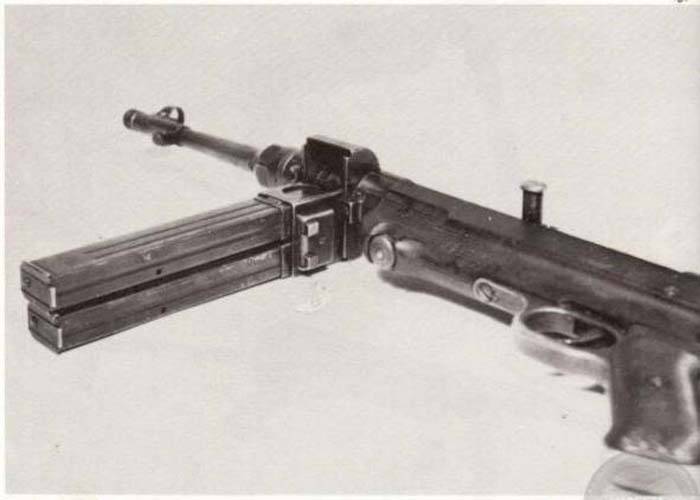
Submachine gun MP 40 / I prepared for shooting. In this position, the left (upper) store is used.
MP 38 / 40 submachine guns were not recommended to be held by the magazine, which could lead to its imbalance and problems with the supply of ammunition. In the MP 40 / I project, this problem has intensified. The insufficiently rigid fastening of the stores in the mine in combination with the mobile installation of the latter led to an additional deterioration in the stability of the structure. As a result, the risk of tilting the used magazine increased and increased the likelihood of a delay in firing.
Despite the maximum simplicity of the new receiver and the mine, the MP 40 / I submachine gun differed from the previous models of the family in greater cost and complexity of production. In addition, a certain revision of store production was required. In the conditions of a full-scale war that places special demands on industry, such features of a new weapon could be considered a disadvantage.
According to the results of tests of a significant number of experienced MP 40 / I, the potential customer rendered his verdict. The original submachine gun for two stores was considered unfit for adoption and serial production. New batches of such weapons were no longer produced. According to various sources, already manufactured products have found application in some units of the Wehrmacht and other structures, but, for obvious reasons, they did not have a noticeable effect on the arsenals of the units and the course of the battles.
The vast majority of manufactured MP 40 / I submachine guns over time were lost, destroyed or disposed of. As far as we know, no more than a dozen samples of this type have survived to our time. All of them are museum exhibits. Unlike the "conventional" MP 38 / 40, produced in large batches, such weapons are of special historical and museum value.
Different tasks can be set before gunsmiths, and in response to this they often offer the most original solutions. However, not always the proposed ideas meet the requirements of practical operation. That is what led to the unsuccessful completion of the German project MP 40 / I. The main task in the form of an increase in ready-to-use ammunition has been successfully resolved. However, the desired result was obtained at the cost of a number of serious flaws. German soldiers had to continue to operate weapons from the receiving shaft at one store.
On the materials of the sites:
http://modernfirearms.net/
https://forgottenweapons.com/
http://mp40.nl/
https://militaryarms.ru/
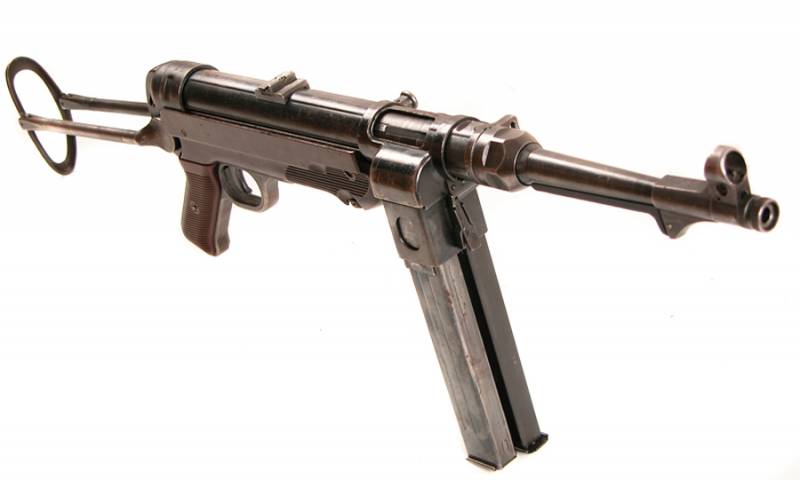
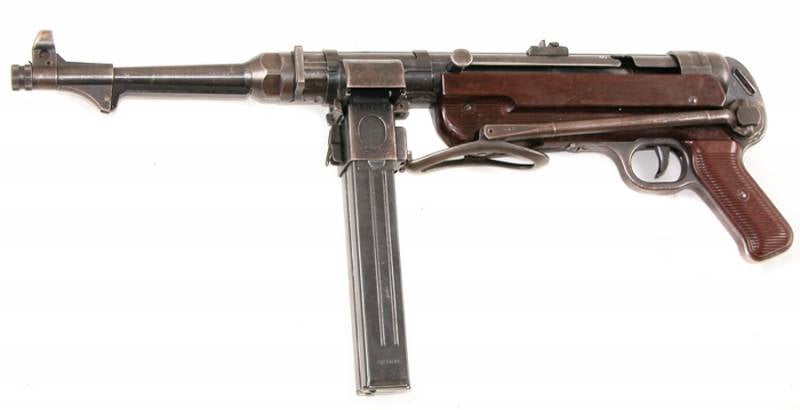
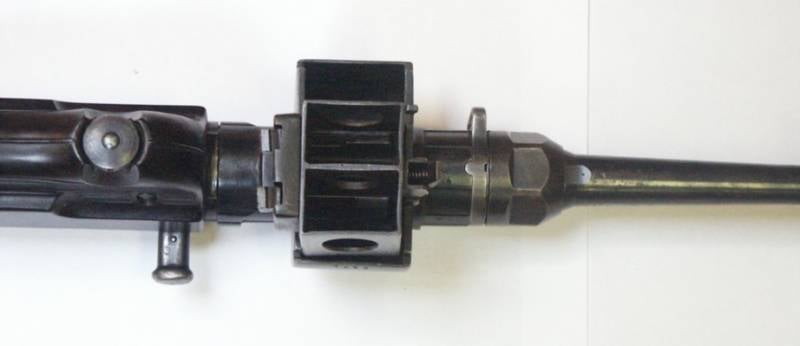
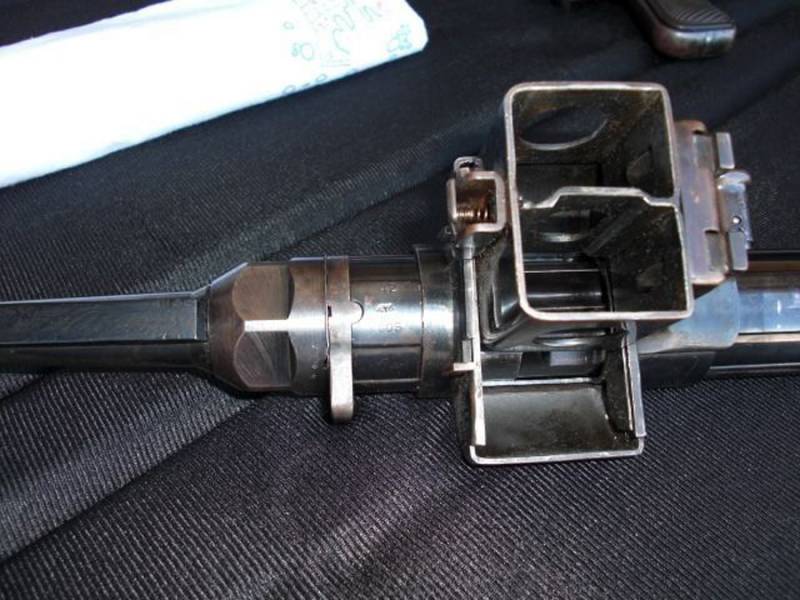
Information